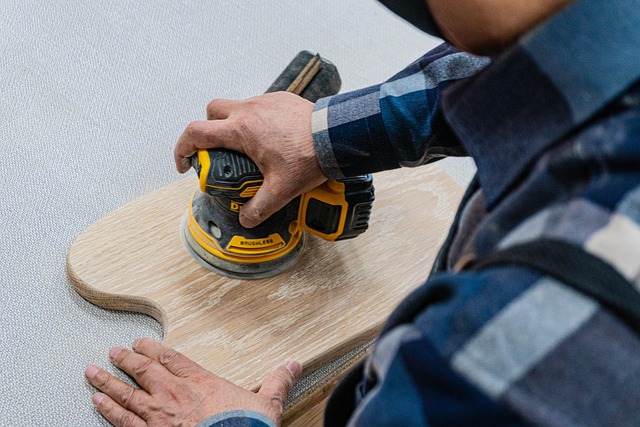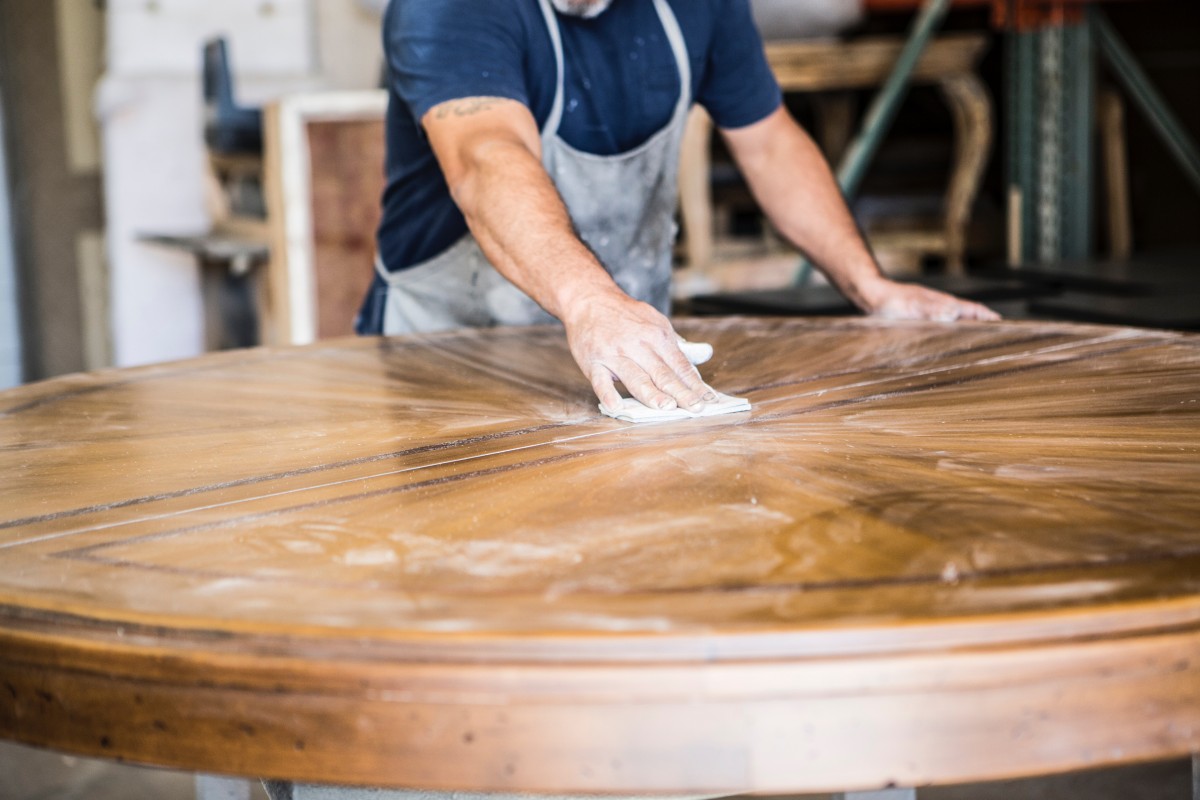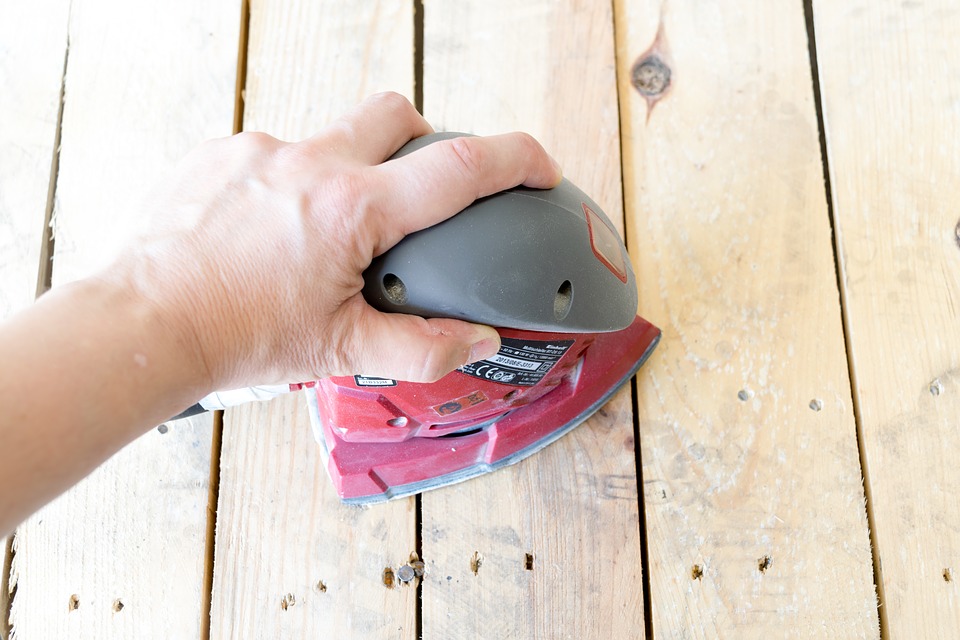
5 Steps to Sanding Wood
Summary
– Step 1: Prepare the piece of wood to be sanded
– Step 2: Prepare your environment and protect yourself
– Step 3: Case 1: Sand the wood manually
– Step 3: Case 2: Sanding with an electric sander
– Step 4: Sand hard-to-reach areas
– Step 5: Do the finishing touches
Before sanding wood, it is necessary to strip it to remove its finish.
Sanding wood allows to make it smooth, to remove the paint residues linked to the stripping, but also to give it back its raw aspect before starting treatment by varnish or paint.
You can do wood sanding with a belt, triangular, disc, or vibrating sander.
To obtain an optimal result, choosing the right sanding paper is essential.
1. Prepare the piece of wood to be sanded
Start by observing whether your piece of wood has any cracks or holes due to wear or weathering.
If so, you must fill them with wood filler (sold in tubes or jars).
To do this:
– Apply a little wood filler to the cracks or holes to fill them in.
– Using a coating knife, smooth out the wood putty and let it dry for 24 hours.
2. Prepare your environment and protect yourself
– If you are sanding indoors, protect the furniture with old sheets, polyethylene film, or tarps.
– If you decide to sand a wooden floor, it is recommended that you empty the room of all furniture, as you may have to move it as you grind.
– Close the doors of the room where you are working to prevent dust from entering other rooms.
– Caulk the groove between the door and the floor with a cloth or terry towel.
– Work with the windows open and protect yourself with a mask to avoid inhaling dust and protective eyewear.
3. Case 1: Sanding the wood manually

You can sand the wood by hand:
– Attach your medium-grit sandpaper to the sanding block. Most of the time, these shims are self-gripping and allow a fast and straightforward fixing of the sanding paper.
– Sand your piece of wood with regular and smooth strokes.
– Sand the wood in the direction of the grain to avoid splintering.
– Then sand the wood with fine sandpaper. Your piece of wood should not feel rough to the touch.
3. Case 2: Sanding the wood with an electric sander

To save time on a large surface, use an electric sander.
– Fit the belt or the coarse grain disc to the chosen sander.
– Sand the entire piece of wood, following the direction of the wood grain.
– Then, fit the belt or the fine-grain disc on the same sander.
– Sand your piece of wood again.
– The wood should feel smooth and free of roughness.
Caution: do not stay too long on the same spot because you risk marking the wood by digging it.
4. Sanding hard-to-reach places
If you want to sand an area that is difficult to access with a belt or disc sander (such as blinds), use an angle sander.
– Attach a triangle of coarse sandpaper to the shoe of the triangular sander (it should be the same size as the sander shoe).
– Sand any hard-to-reach areas.
– Then, change the coarse grit sandpaper for fine-grit sandpaper.
– Resand the hard-to-reach areas of the wood.
– Check that you have sanded the wood correctly by touching it: there should be no roughness, and the wood should be soft to the touch.
Be careful: during sanding, do not stay too long in one place because you risk marking the wood by digging it.
5. Finish the piece
Once you have finished sanding your piece of wood, vacuum the entire piece to remove most of the wood dust.
Then wipe the entire piece with a damp cloth to remove the last of the dust.
All that’s left to do is apply the coating of your choice to the piece of wood.
Equipment for sanding wood
Vacuum cleaner
Tarp
Sanding block
Coating knife
Gloves, goggles, and mask
Sanding paper
Wood paste
Sander
Angle sander
Towel
Read more:


One thought on “5 Steps to Sanding Wood”